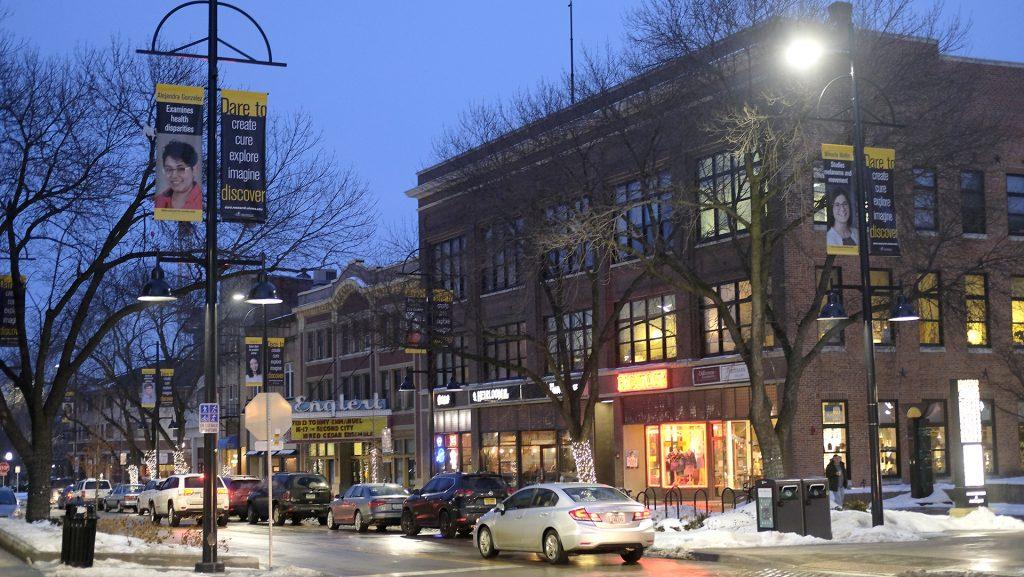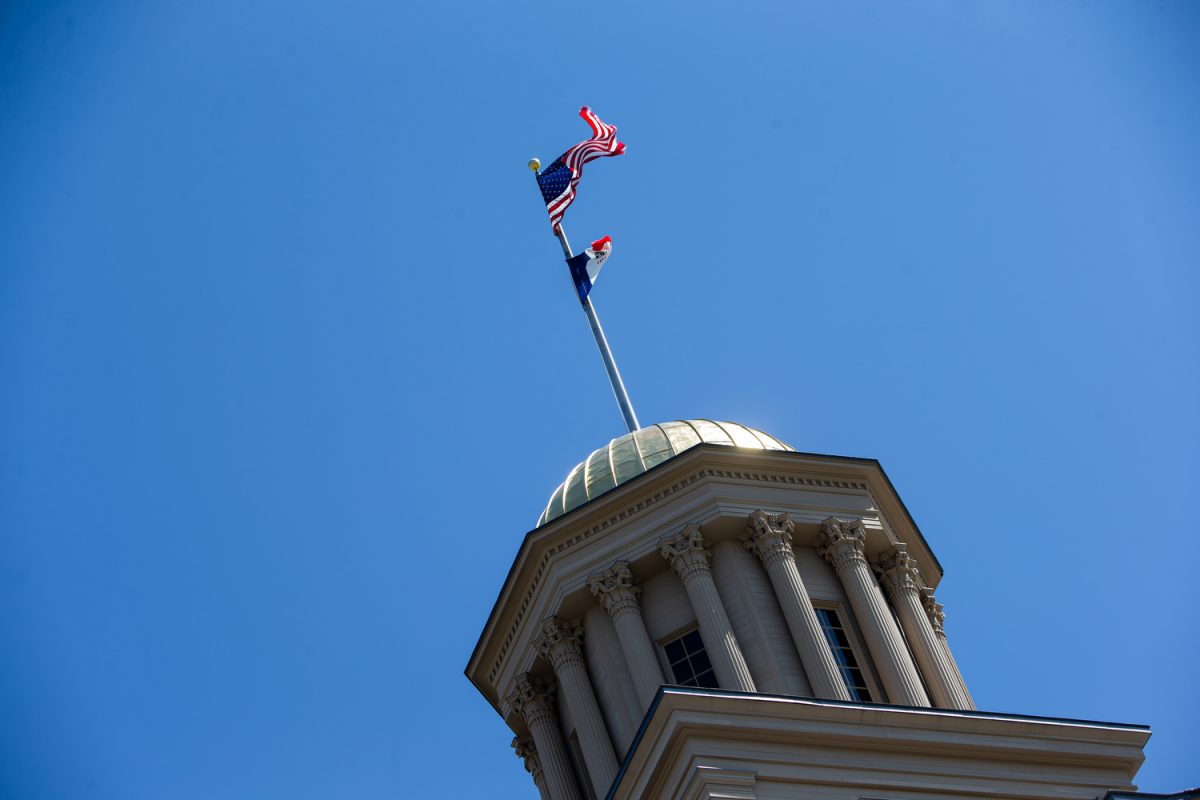The ‘Dare To Discover’ campaign has raised concerns by the disciplines that are represented, but there is an explanation for this.
Maria Kuiper
Walking around the Pedestrian Mall, students, staff, and faculty may see familiar faces printed on banners. These banners are part of the “Dare To Discover” project by the University of Iowa Office of the Vice President for Research and Economic Development. The campaign aims to recognize students who achieve discoveries, innovations, and projects.
While looking through the names and disciplines of the students chosen, several noticed that only seven of the 65 students had a focus in fine arts, humanities, or social sciences. One reason, said an organizer behind the banners, is because those students didn’t get nominated for the recognition.
Tyler Priest, a UI associate professor of history and geography, said he was shocked when he saw the list of people featured and its lack of fine-arts students.
“Everyone’s first major was a STEM field,” Priest said. “We have a really strong tradition in arts, humanities, and social sciences, and I’m just disappointed that we don’t give as much credit to this part of the university.”
Priest also expressed concern about visitors to the university.
“It’s visible to students and parents,” he said. “If you want to study religion, journalism, or history, it’s disheartening to see that none of these are represented.”
Although saddened by the lack of representation, Priest doesn’t diminish the students that were chosen.
“I want to underscore that we have fabulous students at graduate and undergraduate levels doing remarkable research,” Priest said.
A survey sent to faculty that ran August 2017 through late November encouraged faculty to nominate undergraduate and graduate students to reward them for their research and scholarship efforts.
Stephen Pradarelli, the strategic communications director for the VP for Research Office, has received messages of concern regarding the lack of liberal-arts students represented.
“The process we use to find candidates works pretty well,” Pradarelli said. “But, there were only 10 or 12 nominations for Liberal Arts and humanities students. We got an overwhelming response from engineering, medicine, and education. We didn’t get a lot of nominations from the liberal arts.”
Because of the small number of nominated liberal arts, humanities, and fine arts students, the Research office reached out to students from those disciplines, but the students did not want to be a part of the campaign.
“I don’t know why we didn’t see more from other areas,” Pradarelli said. “Our office engages arts and humanities in many ways.”
An example of this is a program called Creative Matches, in which the Research Office brings together artists and scientists to work together on grants. Pradarelli said officials work hard to recognize all disciplines, not just hard sciences.
One of the featured students on the banners downtown, Liam Crawford, who is an undergrad in computer science and philosophy expecting to graduate in 2019.
His main goal is to build learning apps for children. Crawford is also the Vice President for the Presidential Scholars Program, a program for all students who receive the Presidential Scholarship, the most prestigious scholarship offered by UI.
“I’m honored to be one of the undergraduates featured in the campaign, and I’m glad the university is putting a spotlight on student researches in general,” he said. “By running a public campaign, the university is promoting those achievements to my peers and members of the general public.”










